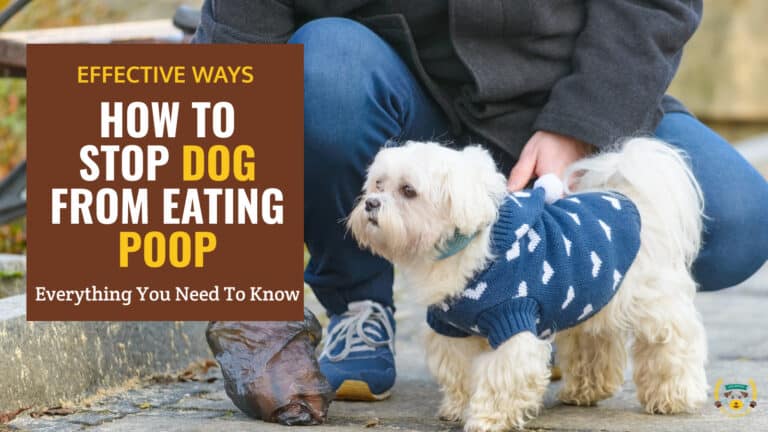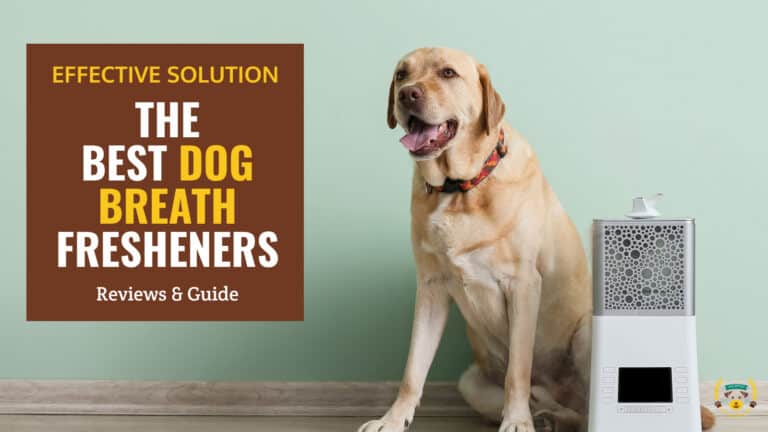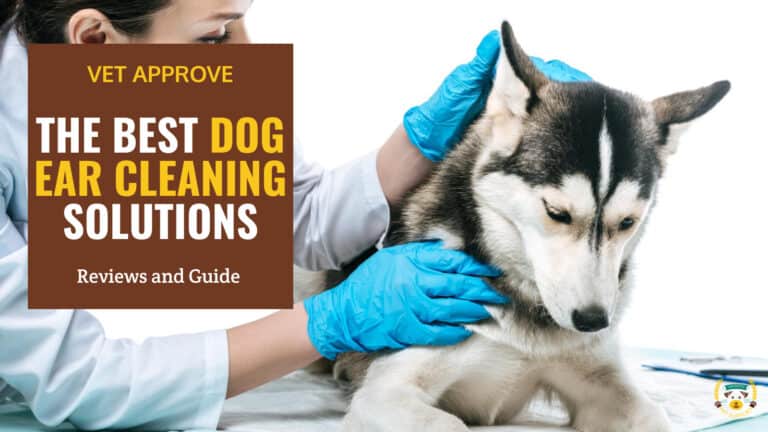What Is the Best Home Remedy for Dog Mange? 10 Natural Solutions
Last updated: March 30, 2024
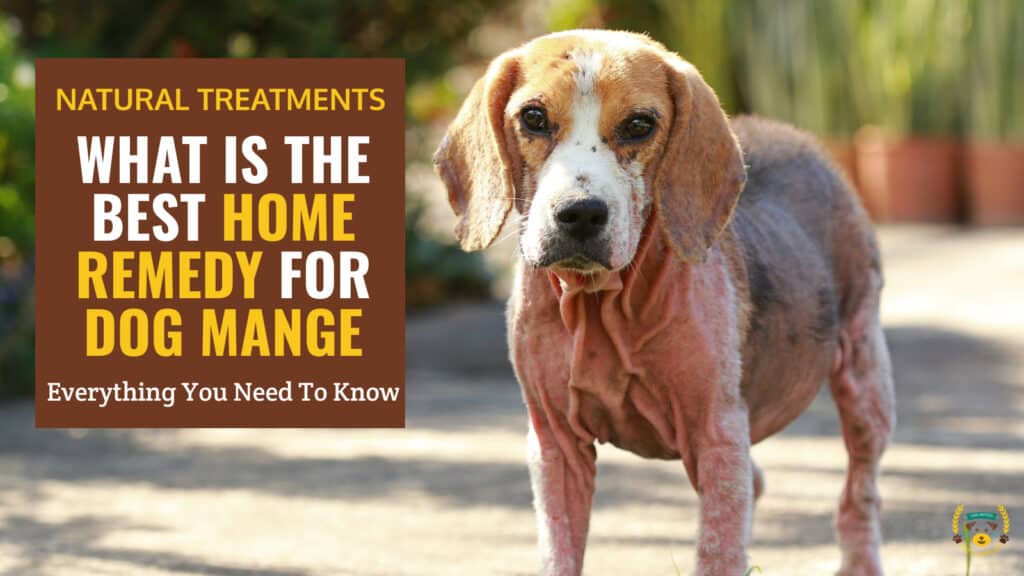
Summary
- Top 10 natural remedies include: apple cider vinegar, honey, olive oil, yogurt, neem oil, aloe vera, lemon, garlic, coconut oil, and borax with hydrogen peroxide.
- These remedies work by balancing skin pH, killing mites, soothing irritation, and boosting the immune system.
- Prevention involves boosting immunity, maintaining a clean environment, and regular grooming.
- Seek veterinary care for severe cases, secondary infections, or persistent mange.
- Puppies and seniors are more vulnerable and require extra caution and professional care.
- Use remedies together cautiously, introduce gradually, and watch for adverse reactions.
- Be consistent and patient; consult a vet if no improvement or worsening occurs.
Imagine your beloved furry companion scratching incessantly, losing patches of hair and developing red, irritated skin. These distressing symptoms point to a common canine ailment: dog mange.
As a responsible pet owner, you want to alleviate your dog's discomfort and restore their healthy coat. That's where natural home remedies come into play.
In this article, we will go through 10 of the best natural remedies to treat dog mange and the ways to apply them; we will also answer some commonly asked questions to ensure you have all the necessary knowledge to help your canine friend feel better.
- 1) Understanding Dog Mange
- 2) The Importance of Natural Home Remedies
- 3) Top 10 Home Remedies for Dog Mange
- 4) Preventing Future Mange Outbreaks
- 5) When to Consult a Veterinarian
-
6)
Frequently Asked Questions
- 6.1) Can I use multiple home remedies simultaneously to treat my dog's mange?
- 6.2) How long does it typically take to see improvement in mange symptoms when using home remedies?
- 6.3) Are there any home remedies that should be avoided when treating dog mange?
- 6.4) Can I use these home remedies on other pets, such as cats, with mange?
- 6.5) Are there any side effects to watch out for when using natural mange treatments?
- 6.6) How often should I apply home remedies to my dog's skin?
- 6.7) Can home remedies completely cure dog mange, or will veterinary treatment still be necessary?
- 7) Final Thoughts
Understanding Dog Mange
Before getting into the world of home remedies, it's crucial to grasp the fundamentals of dog mange. This parasitic skin condition is caused by microscopic mites that burrow into your dog's skin, leading to inflammation, hair loss and intense itching.
Types of Mange in Dogs
Two primary types of mange affect dogs:
Demodectic Mange
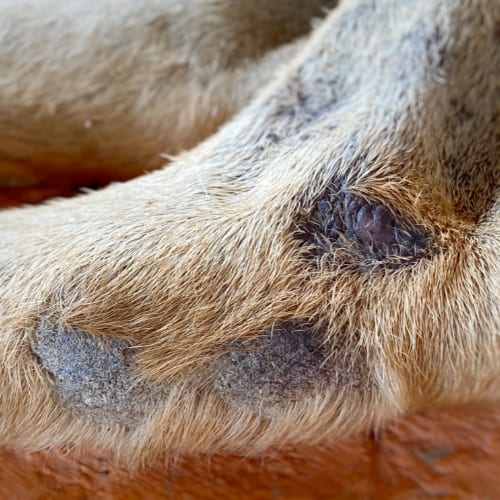
Caused by the Demodex mite, this type is common in puppies and dogs with compromised immune systems. It's not contagious to humans or other animals.
Sarcoptic Mange
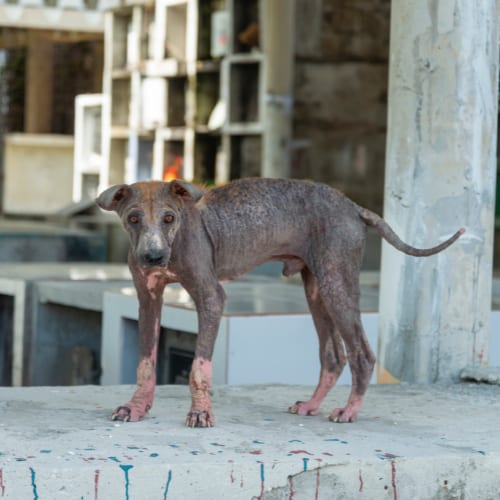
Also known as canine scabies, this highly contagious type is caused by the Sarcoptes scabiei mite. It can spread to other dogs and even humans.
Symptoms of Dog Mange
Keep an eye out for these telltale signs of mange:
- Intense itching and scratching
- Hair loss, particularly around the eyes, ears, and mouth
- Red, bumpy or scaly skin
- Skin infections and a foul odor
- Thickened skin with a leathery appearance (in advanced cases)
If you notice any of these symptoms, it's time to take action and explore effective treatment options.
The Importance of Natural Home Remedies
While veterinary-prescribed medications are often the go-to solution for mange, natural home remedies offer a gentler, more holistic approach. These remedies tap into the power of nature to soothe your dog's skin, fight off mites and promote healing.
Benefits of Using Natural Solutions
Opting for natural home remedies comes with a host of advantages:
- Fewer Side Effects: Unlike harsh chemical treatments, natural remedies are less likely to cause adverse reactions or further irritate your dog's sensitive skin.
- Cost-Effective: Many home remedies utilize ingredients you likely already have in your kitchen or pantry, making them an affordable alternative to expensive veterinary treatments.
- Holistic Approach: Natural remedies work in harmony with your dog's body, strengthening its immune system and promoting overall well-being.
- Convenient: With home remedies, you can treat your dog's mange in the comfort of your own home, without the stress of frequent vet visits.
When to Seek Veterinary Care?
While home remedies can be highly effective, there are times when veterinary intervention is necessary. If your dog's mange is severe, spreads rapidly or doesn't respond to home treatments, it's crucial to consult your veterinarian. They can prescribe stronger medications and address any underlying health issues that may be compromising your dog's immune system.
Top 10 Home Remedies for Dog Mange
You've learned about the types and symptoms of dog mange, and you understand the importance of using natural remedies to treat this pesky condition. Now, let's explore the top 10 home remedies that can help your furry friend find relief and heal their skin.
Apple Cider Vinegar

Apple cider vinegar (ACV) is a versatile remedy that can work wonders for your dog's mange-ridden skin.
ACV's acidic properties help balance your dog's skin pH, creating an inhospitable environment for mites. It also has antibacterial and antifungal properties that can prevent secondary infections.
Application
Mix equal parts water and raw, unfiltered ACV. Apply the solution directly to your dog's skin using a spray bottle or a clean cloth. Repeat daily until the mange subsides.
Honey

Raw honey is more than just a sweet treat; it's a powerful ally in your battle against dog mange.
Honey possesses natural antibacterial properties that can help prevent infections in mange-affected skin. Its high sugar content draws out moisture from the mites, effectively killing them.
Application
Apply a thin layer of raw honey directly to your dog's skin, focusing on the areas with mange. Let it sit for 10-15 minutes before rinsing off with lukewarm water. Repeat daily.
Olive Oil
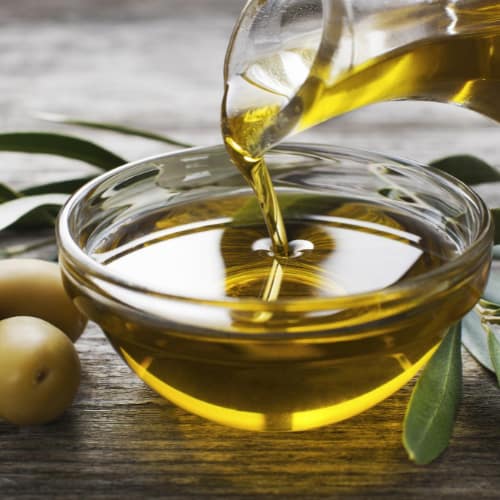
Olive oil is a gentle, moisturizing remedy that can soothe your dog's irritated skin and help eliminate mange mites.
The monounsaturated fats in olive oil deeply moisturize your dog's skin, reducing itching and flakiness caused by mange. It also helps soften and remove crusty patches.
Mixing Olive Oil with Other Ingredients
Combine equal parts olive oil and lemon juice, and apply the mixture to your dog's skin. The lemon juice helps kill mites, while the olive oil moisturizes and soothes.
Yogurt

Plain, unsweetened yogurt is a tasty remedy that can help your dog fight mange from the inside out.
Yogurt contains beneficial probiotics that support your dog's immune system and promote healthy skin. A strong immune system is crucial for fighting off mange mites.
Feeding Yogurt to Your Dog
Add a spoonful of plain, unsweetened yogurt to your dog's food once or twice daily. Choose a yogurt with live, active cultures for maximum benefits.
Neem Oil
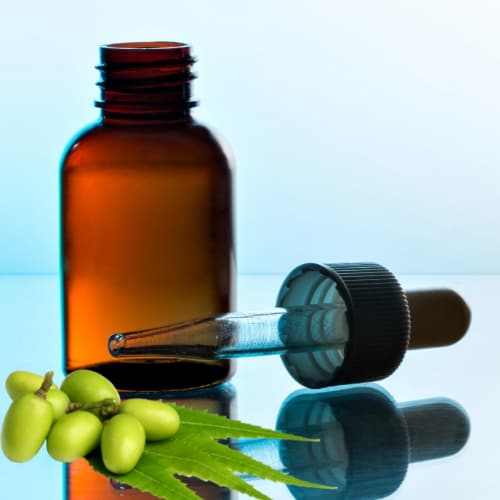
Neem oil, derived from the neem tree, is a potent natural remedy for dog mange.
Neem oil contains compounds that have strong anti-parasitic properties, making it effective against mange mites. It also has anti-inflammatory and antibacterial properties.
Diluting and Applying Neem Oil
Dilute a few drops of neem oil in a carrier oil, such as coconut or olive oil. Apply the mixture to your dog's skin, avoiding the eyes and mouth. Repeat every few days.
Aloe Vera
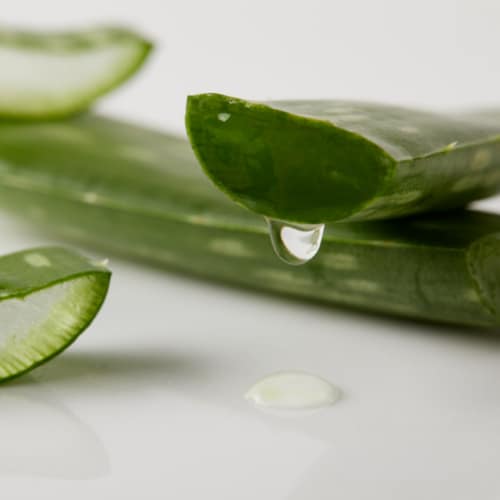
Aloe vera, a succulent plant known for its medicinal properties, can provide much-needed relief for your dog's mange-affected skin.
The gel found inside aloe vera leaves has anti-inflammatory properties that can reduce redness, swelling and itching associated with mange. It also has a cooling effect that soothes irritated skin.
Using Fresh Aloe Vera Gel
Cut a fresh aloe vera leaf and extract the clear gel. Apply the gel directly to your dog's skin, gently massaging it into the affected areas. Repeat 2-3 times daily for best results.
Lemon
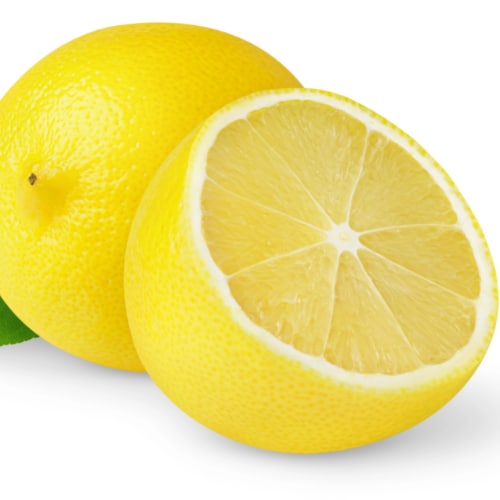
Lemons are more than just a tangy addition to your favorite dishes; they can also help combat dog mange.
The citric acid in lemon juice has been shown to have a harmful effect on mange mites. It can help kill the mites and prevent their spread.
Creating a Lemon Rinse
Squeeze the juice of 2-3 lemons into a bowl of warm water. After bathing your dog, pour the lemon rinse over their coat, making sure it reaches the skin. Don't rinse it off; allow your dog's coat to air dry.
Garlic

Garlic, a flavorful herb with numerous health benefits, can also support your dog's immune system and help fight mange.
Garlic contains compounds like allicin and sulfur, which have immune-boosting properties. A strong immune system can help your dog's body fight off mange mites more effectively.
Adding Garlic to Your Dog's Diet
Mince a clove of garlic and mix it into your dog's food once daily. Start with a small amount and gradually increase it to avoid digestive upset. Consult your vet for the appropriate dosage based on your dog's weight.
Coconut Oil

Coconut oil, a versatile superfood, can work wonders for your dog's mange-infected skin.
Coconut oil is rich in lauric acid, a medium-chain fatty acid with potent antimicrobial properties. It can help kill mange mites and prevent secondary bacterial infections.
Topical Application and Oral Consumption
Melt a tablespoon of coconut oil and apply it directly to your dog's skin, massaging it gently. You can also add a teaspoon of coconut oil to your dog's food for internal benefits.
Borax and Hydrogen Peroxide

Borax and hydrogen peroxide, when used together, can create a powerful solution for treating dog mange.
Creating a Powerful Mange Treatment
Mix 1 cup of 1% hydrogen peroxide, 1 tablespoon of borax, and 1 cup of water. Bathing your dog with this solution can help kill mange mites and soothe irritated skin.
Precautions and Application Process
Be cautious when using borax, as it can be harmful if ingested. Avoid getting the solution in your dog's eyes or mouth. Rinse thoroughly after application and repeat weekly until the mange is gone.
Preventing Future Mange Outbreaks
You've successfully treated your dog's mange using natural home remedies, but your work doesn't end there. Preventing future outbreaks is crucial to maintain your furry friend's skin health and overall well-being.
Boosting Your Dog's Immune System
A robust immune system is your dog's first line of defense against mange mites and other health issues.
Proper Nutrition
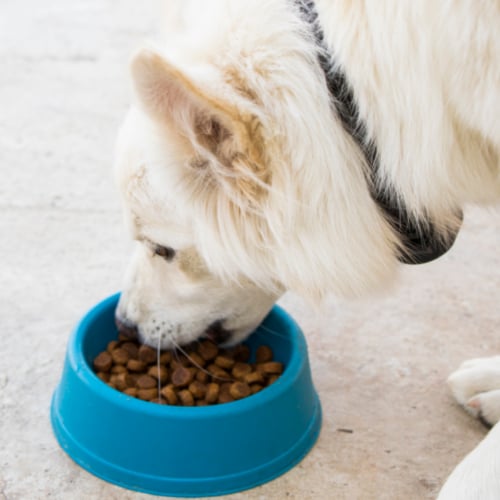
Feed your dog a high-quality, balanced diet that meets their nutritional needs. Look for foods rich in essential fatty acids, vitamins and minerals that support skin health. Consider adding supplements like omega-3 fatty acids or probiotics to their diet.
Check out our reviews of Freeze Dried Dog Food and Food Options for Dogs with Allergies.
Regular Exercise
Keep your dog active with daily walks, playtime and other physical activities. Exercise helps reduce stress, improves circulation and keeps their immune system functioning optimally.
Maintaining a Clean Environment
Mange mites thrive in dirty, unsanitary conditions. Keeping your dog's living space clean and tidy can go a long way in preventing mange outbreaks in the future.
Washing Bedding and Toys
Regularly wash your dog's bedding, blankets and soft toys in hot water to kill any lingering mites or eggs. Use a mild, unscented detergent to avoid irritating your dog's skin.
Vacuuming and Disinfecting
Vacuum your home frequently, especially areas where your dog spends the most time. Pay extra attention to carpets, rugs and upholstered furniture. Disinfect hard surfaces like floors and dog crates with a pet-safe cleaner.
Regular Grooming and Inspections
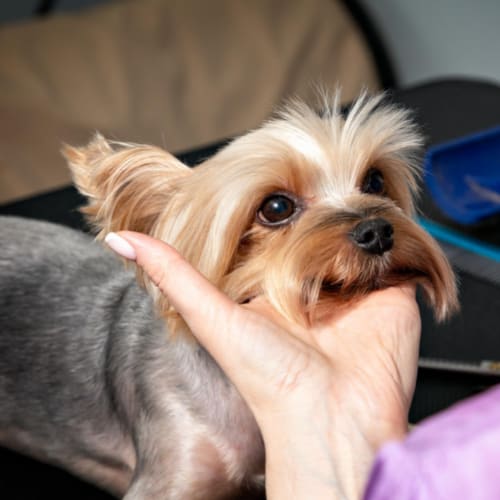
Grooming your dog regularly not only keeps their coat healthy but also allows you to spot any signs of mange early on.
Brushing and Bathing
Brush your dog's coat at least once a week to remove dead hair, distribute natural oils and stimulate blood flow to the skin. Bathe them every few weeks using a gentle, moisturizing shampoo designed for dogs.
Checking for Signs of Mange
During grooming sessions, closely inspect your dog's skin for any signs of mange, such as red patches, hair loss or excessive scratching. The earlier you catch a mange outbreak, the easier it is to treat.
When to Consult a Veterinarian
While natural home remedies can effectively treat mild to moderate cases of dog mange, there are situations where veterinary intervention becomes necessary. Recognizing these instances is crucial for your dog's health and well-being.

Severe Cases of Mange
Some mange cases may be too advanced or severe for home remedies alone. In such situations, professional veterinary care is essential.
Extensive Hair Loss and Skin Damage
If your dog experiences widespread hair loss, leaving large patches of bare skin exposed, it's time to consult your vet.
Extensive skin damage, such as open sores, deep scratches or thick, crusted lesions, also warrants immediate veterinary attention.
Secondary Infections
Mange can weaken your dog's skin barrier, making them more susceptible to secondary bacterial or yeast infections. Signs of infection include the following:
- Foul odor
- Pus or discharge from the skin
- Excessive redness or swelling
- Fever or lethargy
If you suspect a secondary infection, don't delay veterinary care. Your vet can prescribe antibiotics or antifungal medications to address the infection alongside the mange treatment.
Persistent or Recurring Mange
Sometimes, despite your best efforts with home remedies, your dog's mange may persist or keep coming back. This could indicate a more stubborn case or an underlying health issue.
Ineffective Home Remedies
If you've been diligently applying home remedies for several weeks without seeing improvement, it's time to reevaluate your approach. Your vet can assess the situation and recommend a more targeted treatment plan.
Underlying Health Issues
Persistent or recurring mange may be a sign of an underlying health problem, such as a weakened immune system or hormonal imbalance. Your vet can run tests to identify any contributing factors and address them accordingly.
Puppies and Senior Dogs

Puppies and senior dogs are more vulnerable to the effects of mange due to their immature or weakened immune systems. Extra caution and prompt veterinary care are essential for these age groups.
Vulnerability to Mange Complications
Puppies and senior dogs can quickly develop severe mange complications, such as dehydration, malnutrition or secondary infections.
Close monitoring and early intervention are crucial to prevent these issues.
Importance of Professional Care
For puppies and senior dogs with mange, it's best to involve your veterinarian from the start. They can provide age-appropriate treatment, monitor progress closely and address any specific needs or concerns.
Additionally, for a more comprehensive understanding of the health problems in older dogs, you can visit this guide on the common health problems in older dogs.
Frequently Asked Questions
If you still have lingering questions about dog mange, you will most probably find your answer here; we are answering some frequently asked questions.
Can I use multiple home remedies simultaneously to treat my dog's mange?
Yes, you can use multiple home remedies together to tackle your dog's mange from different angles.
For example, you might apply a topical remedy like aloe vera gel while also adding garlic to your dog's diet to boost their immune system.
Remember to introduce new remedies gradually and watch for any adverse reactions.
How long does it typically take to see improvement in mange symptoms when using home remedies?
The time it takes to see improvement varies depending on the severity of the mange and your dog's individual response to the remedies.
Mild cases may start to improve within a week or two, while more severe cases can take several weeks or even months.
Consistency is key, so keep up with the treatment even if progress seems slow.
Are there any home remedies that should be avoided when treating dog mange?
While most natural remedies are safe, there are a few to use with caution or avoid altogether.
For example, undiluted tea tree oil can be toxic to dogs, so it's best to steer clear of this remedy.
Always do your research and consult with your vet before trying any new remedy, especially if your dog has a pre-existing health condition.
Can I use these home remedies on other pets, such as cats, with mange?
While some remedies, like coconut oil, may be safe for cats, it's essential to remember that cats have different sensitivities and metabolisms than dogs.
What works for your pup might not be suitable for your feline friend. Always check with your vet before using any home remedies on cats or other pets.
Are there any side effects to watch out for when using natural mange treatments?
Natural remedies are generally safe, but there's always a chance of side effects, especially if your dog has sensitive skin or allergies.
Watch for signs of irritation, redness or excessive itching after applying any new treatment. If you notice these symptoms, stop using the remedy and consult your vet.
How often should I apply home remedies to my dog's skin?
The frequency of application depends on the specific remedy and the severity of your dog's mange. Some treatments, like aloe vera gel, can be applied daily, while others, like lemon rinses, may be used less frequently.
Always follow the instructions for each remedy and adjust the frequency if needed based on your dog's response.
Can home remedies completely cure dog mange, or will veterinary treatment still be necessary?
In many cases, consistent use of home remedies can effectively treat dog mange, especially mild to moderate cases.
However, severe or persistent cases may require veterinary intervention. If you've been using home remedies for several weeks without improvement, or if your dog's condition worsens, you must consult your vet for additional treatment options.
Final Thoughts
From soothing aloe vera to immune-boosting garlic, natural home remedies offer a powerful arsenal against dog mange.
However, successful treatment requires a holistic approach that combines these remedies with preventive measures like proper nutrition, a clean environment and regular grooming. Patience and consistency are key, but it's also crucial to recognize when veterinary guidance is necessary, particularly for severe cases or vulnerable dogs.
We hope our detailed guide provided everything you need to treat your dog's condition at home or even prevent the infection by following our suggested preventative measures. If you still have any questions, please contact us.



